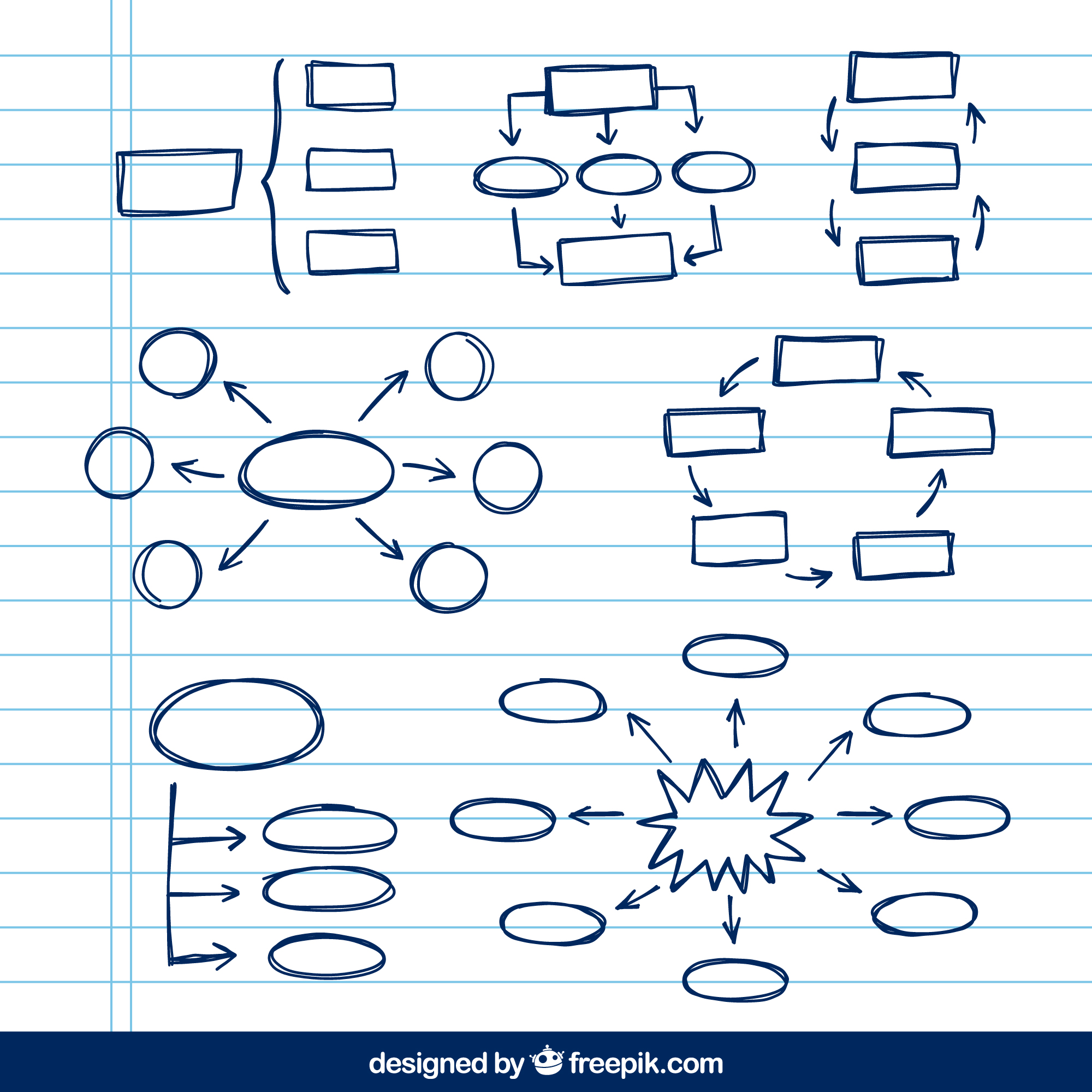| English | Polish |
|---|---|
Information architecture components can be divided into four categories: | Komponenty architektury informacji można podzielić na cztery kategorie: |
1. Organization systems – how do we categorize information, for example by subject, audience or date. | 1. Systemy organizacyjne – jak kategoryzujemy informacje, na przykład według tematu, odbiorcy lub daty. |
2. Labeling systems – how do we represent information, for example scientific terminology or general vocabulary. | 2. Systemy etykietowania – jak reprezentujemy informacje, na przykład terminologię naukową lub słownictwo ogólne. |
3. Navigation Systems – how do we browse or move through information, for example clicking through a hierarchy. | 3. Systemy nawigacyjne – jak przeglądamy lub poruszamy się po zasobach informacyjnych, na przykład klikając w hierarchii. |
4. Searching systems – how do we search information, for example executing a search query. | 4. Systemy wyszukiwania – jak szukamy informacji, na przykład korzystając z wyszukiwarki. |
Organization systems are composed of organization schemes and organization structures. An organization scheme defines the shared characteristics of content items and influences the logical grouping of those items. An organization structure defines the types of relationships between content items and groups. Organization systems form the foundation for navigation and labeling systems. | Systemy organizacyjne składają się ze schematów organizacyjnych i struktur organizacyjnych. Schemat organizacyjny określa wspólne cechy elementów zawartości i wpływa na logiczne ich grupowanie. Struktura organizacyjna definiuje rodzaje relacji między elementami i grupami treści. Systemy organizacyjne stanowią podstawę dla systemów nawigacji i etykietowania. |
Organization schemes
| English | Polish |
|---|---|
There are exact and ambiguous organization schemes. Exact organization schemes divide information into well defined and mutually exclusive sections. For example, alphabetical order of a phone book. If you know the person’s last name, you can look in that letter of the alphabetical list. This is called known-item searching. | Istnieją dokładne i niejednoznaczne schematy organizacyjne. Dokładne schematy organizacyjne dzielą informacje na dobrze zdefiniowane i rozłączne zbiory. Na przykład, porządek alfabetyczny książki telefonicznej. Jeśli znasz nazwisko danej osoby, możesz znaleźć literę na liście alfabetycznej. Nazywa się to wyszukiwaniem znanego elementu. |
You know what you are looking for and it is obvious how to find it. The problem with exact organization schemes is that they require a user to know the specific name of the object they are looking for. Exact organization schemes are easy to design, maintain, and use. | Wiesz, czego szukasz i jasne jest, jak to znaleźć. Problem z dokładnymi schematami organizacyjnymi polega na tym, że wymagają one od użytkownika znajomości konkretnej nazwy poszukiwanego obiektu. Dokładne schematy organizacyjne są łatwe do zaprojektowania, utrzymania i użytkowania. |
Types of exact organization schemes include alphabetical, chronological, and geographical. | Wśród dokładnych schematów organizacyjnych wyróżniamy schemat alfabetyczny, chronologiczny i geograficzny. |
Ambiguous organization schemes divide information into categories that defy exact definition. They are difficult to design and maintain, and they can be difficult to use. Is a tomato a vegetable or a fruit? However, they are often more important and useful than exact organization schemes. Why? Because users don’t always know what they are looking for. Information seeking is often iterative and interactive. What you find in the beginning of the search may influence what you look for and find later in your search. | Niejednoznaczne schematy organizacyjne dzielą informacje na kategorie, których nie da się dokładnie zdefiniować. Są one trudne do zaprojektowania, utrzymania i użytkowania. Czy pomidor to warzywo, czy owoc? Jednak często są one ważniejsze i bardziej użyteczne niż dokładne schematy organizacyjne. Dlaczego? Ponieważ użytkownicy nie zawsze wiedzą, czego szukają. Poszukiwanie informacji jest często iteracyjne i interaktywne. To, co znajdziesz na początku wyszukiwania, może mieć wpływ na to, czego szukasz i co znajdziesz później. |
Ambiguous organization supports the method of grouping items in meaningful ways. Therefore, while ambiguous organization schemes require more work, they often are more valuable to the user than exact schemes. The success of these schemes depends on the quality of the scheme and the placement of items within this scheme. User testing is very important for this type of scheme. There is ongoing need for classifying new items and for modifying the organization scheme to reflect changes in the scheme. | Niejednoznaczna organizacja pomaga grupować elementy w sposób logiczny. Dlatego też, z jednej strony niejednoznaczne schematy organizacyjne wymagają więcej pracy, ale z drugiej strony są one bardziej wartościowe dla użytkownika niż dokładne schematy. Skuteczność tych schematów zależy od ich jakości i zawartych w nich elementów. Dla tego typu schematów bardzo ważne są testy użytkowników. Istnieje nieustanna potrzeba klasyfikowania nowych elementów oraz modyfikowania schematu organizacyjnego w celu odzwierciedlenia zmian w schemacie. |
Types of ambiguous schemes include topic, task, audience, metaphor, hybrids. Topical schemes organize content into subjects. | Wśród niejednoznacznych schematów wyróżniamy następujące typy: tematyczne, zadaniowe, ukierunkowane na odbiorców, wykorzystujące metafory oraz hybrydowe. Schematy tematyczne organizują zawartość w grupy tematów. |
Task schemes organize content by processes, functions, or tasks. Most common example of web sites using this scheme is e-commerce sites where a user interaction is centered on tasks, for example buy, sell, pay, etc. | Schematy zadaniowe porządkują zawartość według procesów, funkcji lub czynności. Najczęstszym przykładem stron internetowych korzystających z tego schematu są strony e-commerce, gdzie interakcja użytkownika koncentruje się na zadaniach, na przykład kupowania, sprzedawania, płacenia itp. |
Audience oriented schemes are useful for sites that are frequented by repeat visitors of a certain audience. For example, Dell web site separates its content into „Home” and „Business”. Audience schemes can be open or closed. An open scheme allows users of one audience to access content of another audience. A closed scheme prevents users from using content of another audience. | Schematy zorientowane na odbiorców są przydatne w miejscach, które są odwiedzane przez użytkowników danej grupy. Na przykład strona internetowa firmy Dell dzieli swoją zawartość na „Dom” i „Biznes”. Schematy zorientowane na odbiorców mogą być otwarte lub zamknięte. Schemat otwarty umożliwia użytkownikom jednej grupy odbiorców dostęp do treści innej grupy. Schemat zamknięty uniemożliwia użytkownikom korzystanie z treści należących do innej grupy odbiorców. |
Metaphor schemes use association with known subjects. They should be used with caution. They must be familiar to users. Hybrids combine elements of multiple schemes. | Systemy wykorzystujące metafory opierają się na skojarzeniach ze znanymi przedmiotami. Należy je stosować ostrożnie. Muszą one być znane użytkownikom. Schematy hybrydowe łączą elementy wielu schematów. |

Organization structures
| English | Polish |
|---|---|
The structure of information defines the ways in which users can navigate. Major structures are hierarchy, the database-oriented model, and hypertext. | Struktura informacji określa sposoby poruszania się użytkowników. Główne struktury to hierarchia, model bazodanowy i hipertekst. |
The foundation of good information architecture is a well designed hierarchy or taxonomy. In creating a taxonomy, it is important to not make categories mutually exclusive. Sometimes an item may belong in more than one category. It is also important to balance between breadth and depth in the taxonomy. Breadth refers to the number of options at each level of the hierarchy. Depth refers to the number of levels in the hierarchy. | Podstawą dobrej architektury informacji jest poprawnie zaprojektowana hierarchia lub taksonomia. Projektując taksonomię, ważne jest, aby nie tworzyć rozłącznych kategorii. Czasami dany obiekt może należeć do więcej niż jednej kategorii. Ważne jest również zachowanie równowagi pomiędzy szerokością i głębokością taksonomii. Szerokość odnosi się do liczby opcji na każdym poziomie hierarchii. Głębokość to liczba poziomów w hierarchii. |
If a hierarchy is too narrow and deep, users have to click through a lot of levels to find what they are looking for. If a hierarchy is too broad and shallow, users are presented with too many options on the main menu. | Jeśli hierarchia jest zbyt wąska i głęboka, użytkownicy muszą przejść przez wiele poziomów, aby znaleźć to, czego szukają. Jeśli hierarchia jest zbyt szeroka i płytka, użytkownicy mają zbyt wiele opcji w menu głównym. |
Consider the following: recognize the danger of overloading users with too many options; group and structure information on the page level; subject the design to user testing. For new web sites, lean towards a broad and shallow hierarchy. This allows the addition of content. Be conservative in adding more depth as you need to prevent users to make too many clicks. | Rozważ następujące kwestie: niebezpieczeństwo przeciążenia użytkowników zbyt dużą liczbą opcji; grupowanie i strukturyzowanie informacji na poziomie strony; przetestowanie projektu przez użytkowników. W przypadku nowych stron internetowych twórz szeroką i płytką hierarchię. Pozwala ona na dodawanie treści. Bądź ostrożny w zwiększaniu głębokości, aby użytkownicy nie musieli zbyt dużo klikać. |
In a database-oriented model we structure the data using metadata. Metadata links the information architecture to the design of database schema. By tagging information with metadata, we enable searching and browsing. | W modelu bazodanowym organizujemy dane przy użyciu metadanych. Metadane łączą architekturę informacji z projektem schematu bazy danych. Oznaczając informacje metadanymi, umożliwiamy ich wyszukiwanie i przeglądanie. |
A hypertext system involves two primary types of components to be linked. These components can be from systems that connect text, data, image, video, and audio. This structure provides flexibility but also causes users confusion because hypertextual links are often personal by nature. This structure is good to use to complement the hierarchical or database models. | System hipertekstowy składa się z dwóch podstawowych typów komponentów, które mają być połączone. Te komponenty mogą pochodzić z systemów, które łączą tekst, dane, obraz, wideo i dźwięk. Taka struktura zapewnia elastyczność, ale również powoduje dezorientację użytkowników, ponieważ hiperłącza są często subiektywne. Strukturę tę można wykorzystać do uzupełnienia modeli hierarchicznych lub bazodanowych. |
It is very important to provide multiple ways to access the same information. Large web sites would require all three types of structure. The top level will be hierarchical, sub-sites are good candidates for database model, and less structured relationships between content can be handled by hypertext. | Bardzo ważne jest zapewnienie wielu sposobów dostępu do tych samych informacji. Duże strony internetowe wymagałyby wszystkich trzech rodzajów struktury. Najwyższy poziom będzie hierarchiczny, podstrony są dobrymi kandydatami do modelu bazodanowego, a mniej ustrukturyzowane relacje między treścią mogą być wyrażane za pomocą hipertekstu. |
Source of English text: https://www.galaxyconsulting.net/blog/information-architecture-components-organization-systems
Exercises:
Exercise 1.
Answer the questions
- What are the four components of information architecture?
- What are organization systems composed of?
- What does an organization scheme define?
- What does an organization structure define?
- What kinds of organization schemes do you know?
- Can you name a few types of exact organization schemes?
- What are ambiguous organization schemes?
- Do you know any types of ambiguous schemes?
- What do metaphor schemes use?
- What are the major organization structures?
Exercise 2.
Exercise 3.
Exercise 4.
Exercise 5.
Translate the sentences into English and check if your answer is correct.
- Dokładne schematy organizacyjne dzielą informacje na dobrze zdefiniowane i rozłączne zbiory.
- Niejednoznaczne schematy organizacyjne dzielą informacje na kategorie, których nie da się dokładnie zdefiniować.
- Schematy tematyczne organizują zawartość w grupy tematów.
- Schematy zadaniowe porządkują zawartość według procesów, funkcji lub czynności.
- W modelu bazodanowym organizujemy dane przy użyciu metadanych.
- Oznaczając (tagując) informacje metadanymi, umożliwiamy ich wyszukiwanie i przeglądanie.
